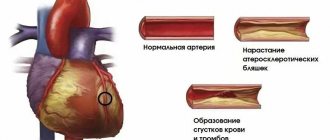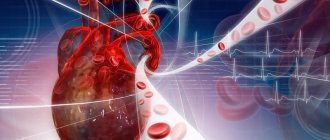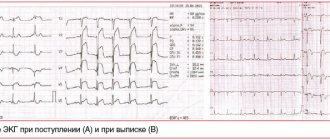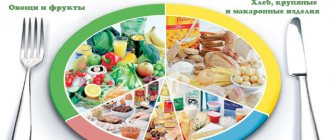How to treat the heart with folk remedies
Hop tincture - ten hop cones are poured with vodka (40 ml), covered with a tight lid and left for ten days in a dark place.
Six drops are diluted in a spoonful of water, taken three times a day. People begin to take this folk remedy for a sick heart when there is myocardial weakness or coronary artery disease. If you are worried about insomnia due to nervousness, twice is enough. The best time for treatment is after lunch and in the evening after dinner. The plant is slightly poisonous, it is also important to follow the dosage. Motherwort - two tablespoons of motherwort herb for the heart are steamed with a glass of boiling water, allowed to stand for two hours, then filtered
Drink 1/4 glass half an hour before meals. A folk remedy for treating the heart is beneficial for angina pectoris and cardiosclerosis. Products containing the plant should not be taken by pregnant women or those with low blood pressure.
https://www.youtube.com/watch?v=C-TuUFEJCM0
Valerian - cut the roots of the plant as finely as possible, pour a glass of boiled water into a spoon in the evening, and leave overnight. In the morning, start taking a spoonful three times a day. A folk remedy with valerian for the heart is drunk for heart pain, hysteria, and frequent headaches.
Lily candinum - chop the bulbs, take three spoons, add an incomplete glass of vodka, strain after ten days, store in a cool place. Use a teaspoon with water 15 minutes before meals three times. The product helps with edema associated with cardiac dysfunction, shortness of breath, and is useful for heart failure. The duration of treatment is 14 days.
Collection for the heart - hawthorn and red rowan berries, rose hips, white raisins are taken in equal quantities and crushed. A spoonful of the mixture is brewed with 1 liter of boiling water and kept in a thermos for 12 hours. Divide into small portions and drink throughout the day. The composition can be taken for a long time; the folk remedy will not cause harm to the heart.
Strengthening agent - in addition to herbs, it is useful to take a mixture of fruits for the heart. Remove the seeds from 250g lemons, chop them finely and combine with 150g figs. The mixture is poured with 200 ml of vodka and left in a glass jar for 10 days. Use 1 tbsp. four times a day.
Pain in the heart - the drug is used after a heart attack. To prepare, mix five heads of garlic, five lemons with peel but without seeds, 500g of linden honey. The mixture is left for a week in a cool place. Take 1 tbsp. before meals.
Rosehip - a tablespoon of crushed rosehip roots is brewed with a glass of boiling water, simmered over low heat for a quarter of an hour. Use three tablespoons for two weeks.
If you are worried about pain in the heart, make an infusion of lemon balm leaves - 2 tbsp. by 1.5 tbsp. boiling water. Take 100 ml three times a day.
If you feel dizzy or have a palpitation, juice from hawthorn fruits and pharmaceutical tincture of propolis help well. They take it equally. Take twenty drops before meals.
For heart diseases, a decoction of hawthorn leaves and flowers helps. 1 tbsp. plant raw materials are brewed with 3 glasses of hot water, wrapped warmly for an hour. Take a glass three times before meals, treatment lasts three weeks.
Palpitations associated with stress, nervousness - mix crushed pitted lemons with honey. They take half a kilogram of each. Twenty crushed apricot grains are added to the mixture. Eat a tablespoon of the medicinal mixture in the morning, before bed.
When taking any folk remedy for the heart, you must remember the contraindications and follow the dosage so as not to harm yourself.
Treatment of coronary heart disease with folk remedies: home recipes ^
Interpretation of the ECG for coronary heart disease
Traditional methods of treating coronary heart disease have been widely used for many centuries. Let's consider the most popular folk recipes for the treatment of coronary artery disease.
Treatment of coronary heart disease with motherwort
- You need to prepare a herbal mixture from motherwort, medicinal chamomile flowers, hawthorn flowers, birch leaves, heather, wheatgrass rhizomes, horse chestnut flowers.
- All ingredients must be mixed thoroughly.
- A small spoon of the dry mixture should be filled with 200 ml of boiling water and placed in a closed container.
- The container with the broth should be wrapped in a warm towel and left for half an hour.
- Drink one glass before breakfast and before dinner daily.
Treatment of coronary heart disease with hawthorn
- A tablespoon of hawthorn fruits, which must first be dried or purchased already dried fruits at the pharmacy, should be brewed with 200 ml of boiled hot water and placed in a thermos.
- Leave for a couple of hours.
- When 2 hours have passed, it is recommended to strain the broth through cheesecloth.
- Drink 2 tablespoons of decoction three times a day.
- You can also make regular tea from hawthorn.
Treatment of coronary heart disease with garlic
Garlic is considered an equally effective remedy for treating heart disease.
- 50 g of pre-chopped garlic should be poured with 200 ml of alcohol.
- You need to infuse the garlic tincture for 3 days.
- The remedy is taken in this way: dilute 8 drops of the healing potion in a teaspoon of boiled water and consume three times a day.
- Within a week the patient’s well-being will improve significantly.
Treatment of ischemic heart disease with nettles
Nettles need to be collected before flowering and dried. You can also use fresh nettle leaves.
- Approximately 50 g of the plant must be finely chopped, placed in an enamel bowl and filled with two glasses of water. After this, simmer over low heat for 10 minutes.
- Take a glass of decoction 3 times a day before meals.
- The result will be noticeable within 5 days. The prepared broth should be stored in the refrigerator.
Treatment of coronary heart disease feijoa
Feijoa fruits are very good for the heart. You can eat 3-4 fruits a day, you can add feijoa pieces to tea or make jam.
- It is also recommended to drink a tablespoon of feijoa juice per day, adding it to a quarter glass of water.
- Feijoa fruits can be twisted with sugar and mixed in a ratio of 2 to 1. Store in the refrigerator and consume 2 tablespoons of the mixture per day.
Treatment of coronary artery disease with burdock
A decoction of burdock for coronary heart disease can be prepared as follows:
- 2 tablespoons of dry crushed burdock root should be poured into 0.5 liters of boiled water and left overnight.
- It is recommended to take the product as follows: half a glass 15 minutes before breakfast, lunch and dinner, that is, three times a day.
Treatment of coronary heart disease with valerian
Tea with valerian root will help reduce blood pressure and also normalize the functioning of the cardiovascular system.
- To prepare healing tea, you need valerian root, calamus (20 g each), periwinkle herb, yarrow (10 g each), flowers and hawthorn fruits (30 g).
- All herbs must be mixed first. Pour 400 ml of boiling water over a spoonful of the mixture and leave overnight.
- Warm up before use.
- Drink a glass of medicinal tea 2 times a day.
Treatment of coronary heart disease with horseradish
Due to the healing properties of horseradish, its role in the treatment of heart diseases is very great. It is recommended to carry out inhalations using an infusion of horseradish root.
- Grate 5 g of horseradish root and pour a cup of boiling water.
- Leave for a couple of hours and carry out the procedure.
- You can also rub grated horseradish root with honey and eat a teaspoon of the medicinal mixture every day.
Treatment of coronary heart disease with honey
People who suffer from coronary heart disease should definitely eat honey, as this product strengthens the heart muscle and stimulates blood circulation.
For the treatment of coronary heart disease and blood vessels, a recipe based on honey and vegetable or fruit juices is perfect. Carrot, beet, and lemon juices work well.
- To prepare a medicinal mixture, you need to take a glass of each indicated type of juice and add a glass of honey to the juices.
- You need to take the drug by spoon 2 times a day an hour before meals.
Treatment of coronary heart disease with herbs
To prepare a herbal mixture that will help fight ischemia, you need to take 2 tablespoons of dill seeds, the same amount of jaundice herb and reed sunflower flowers, a spoonful of coltsfoot. All ingredients need to be crushed and mixed.
- Add a spoonful of herbal mixture to 250 ml of boiling water and leave for about an hour.
- After this, strain and squeeze out the herb thoroughly using gauze.
- This decoction should be consumed very often - up to 6 times a day in an amount of 100 ml.
Treatment of coronary artery disease (classical medicine)
Treatment of IHD in the initial stages is carried out on an outpatient basis. In advanced forms of the disease, when there is a high probability of complications, treatment is carried out in a hospital setting.
Drug therapy includes the prescription of the following groups of drugs:
- antiplatelet agents – improve blood flow;
- statins and fibrins – slow down the formation of new atherosclerotic plaques and partially destroy old ones;
- adrenergic blockers – reduce heart rate and reduce myocardial oxygen demand;
- diuretics – remove excess fluid from the body;
- nitrates – effectively relieve angina attacks;
- Anticoagulants – thin the blood and prevent blood clots.
The attending physician must prescribe certain medications, determine their dosage and duration of treatment. Self-medication is unacceptable and can lead to the development of a number of serious complications.
Surgical treatment is indicated in cases where conservative therapy does not produce results and the patient’s condition continues to deteriorate.
The main method of surgical treatment of coronary artery disease is coronary artery bypass grafting . The operation is performed under general anesthesia. Its essence lies in suturing a special shunt to the coronary artery and thus creating a bypass for blood, which allows restoring blood supply to the myocardium.
In addition to coronary artery bypass grafting, treatment methods for coronary artery disease such as angioplasty and stenting are used. The disadvantages of these methods are the short-term effect.
If treatment for coronary artery disease is started in time, the prognosis is favorable. The patient’s quality of life increases, ability to work is restored, and the risk of myocardial infarction and stroke is reduced.
Folk remedies. Hawthorn
Diet and nutrition for coronary heart disease
Many people associate hawthorn only with the tincture that is sold in pharmacies. This is why this berry is mistakenly not considered healthy. This is a huge misconception, since hawthorn is recommended for use for various heart diseases, and not only for ischemic heart disease. There are three ways to prepare hawthorn:
- Decoction. You need to take six tablespoons of hawthorn berries and the same amount of motherwort. Pour all this over one and a half liters of boiling water, wrap it in a blanket and leave it for the whole day. After this time, filter the broth well so that not a single particle of hawthorn or motherwort remains, and drink one glass three times a day
- Infusion. You need to take dry hawthorn fruits (a tablespoon) and pour boiling water over them. It is better to do this in a thermos, as you need to let it brew for at least two hours. After time has passed, you need to take three spoons three times a day
- Tea. For tea drinkers, this recipe will be to their taste, since hawthorn tea is not only healthy, but also quite pleasant to the taste. You need to take enough berries so that the color of the tea is dark, but not black. For those who like tea with sugar, you can add it there
You can buy hawthorn at the market from grandmothers, or in the autumn you can simply pick it from the bushes, which are often located next to the entrances of high-rise buildings built around the 70s.
Prevention of coronary artery disease
Prevention of coronary heart disease includes:
- rejection of bad habits;
- proper nutrition - avoiding fast food, fatty, fried, smoked, salty, pickled foods, including more fresh fruits and vegetables in the diet;
- avoidance of stressful situations;
- weight control;
- regular blood pressure measurement;
- walking, physical activity, physical education;
- cholesterol control;
- Regular preventive examinations and ECGs will help identify the disease in the early stages, which will significantly facilitate subsequent treatment and improve the prognosis.
Nature to help the heart
Quick treatment of cystitis at home
Ischemia occurs when the coronary artery is damaged and the myocardium is poorly supplied with blood. Lack of oxygen immediately affects a person’s well-being. But among nature's gifts there are many heart-healthy plants and foods. Our ancestors were treated with these folk remedies.
These are medicinal plants such as:
- hawthorn,
- fennel,
- peppermint,
- motherwort,
- yarrow.
In difficult war times for the country and every person, hawthorn fruits were saved, replacing scarce tablets with them. A decoction made from the leaves of this plant helps supply blood to the blood vessels of the heart and normalizes heart rhythm.
Hawthorn extract is prescribed to older people:
- with weakened heart muscle;
- in case of cardiac dysfunction;
- in a state after myocardial infarction.
It can also be taken by young people exposed to frequent stress: it is a good prevention of heart disease in older age and a successful treatment of nerves.
Fennel, rich in essential oils, can have a general strengthening effect on the heart and blood vessels, and yarrow normalizes the number of heart contractions.
Peppermint helps dilate coronary vessels, which improves blood circulation and prevents high blood pressure.
Motherwort is called a healer of the heart. Vitamin A in its composition helps treat heart failure. This herb, which has been serving human health for about 1000 years, is used for arrhythmia and to restore immunity.
Based on it, alcohol infusions and tablets are made, which:
- increase human energy potential;
- relieve nervous tension;
- protect from neuroses.
And this, in turn, serves as a guarantee of the safety of the heart and makes treatment more accessible.
In addition to the above-mentioned plants, the following products will help improve cardiac activity:
- wild garlic,
- garlic,
- horseradish,
- cranberry,
- black currant.
Properties of herbs
A visit to the doctor will help eliminate heart problems, but traditional medicine can be successfully supplemented with alternative medicine.
If the patient has recently become concerned about coronary heart disease, treatment with folk remedies will be very advisable. Why do heart patients turn to traditional medicine for help? Many believe in the healing power of nature and the wisdom of the people, who from time immemorial have used this power for their own benefit. Time-tested recipes are credited with magical properties, but the successful treatment of cardiac ischemia with folk remedies has a completely scientific explanation.
The plant world is rich in beneficial substances that can improve the functioning of the heart and blood vessels.
Medicines that are used in traditional medicine are made from plant extracts. Vitamins and microelements contained in certain foods, vegetables, and fruits help strengthen the heart muscle.
Plants that can be used to treat coronary heart disease:
- hawthorn;
- motherwort;
- peppermint;
- fennel;
- rose hip;
- pharmaceutical camomile;
- Melissa;
- valerian;
- horsetail;
- Eleutherococcus
This is not a complete list of medicinal herbs. Some strengthen the heart, others relieve symptoms of arrhythmia, pain, calm the nervous system, lower blood pressure, and fight swelling. Often all these medicinal properties are combined in one plant.
Here are descriptions of some herbs and their beneficial properties.
Hawthorn . The plant helps the heart contract more strongly, activates blood flow in the vessels that supply the heart, and can relieve attacks of arrhythmia. Hawthorn has a beneficial effect on the nervous system and relieves pain accompanying angina pectoris. It contains hyperin (an antioxidant), which protects blood vessels from damage and prevents the development of atherosclerosis.- Rose hip . Contains a lot of useful things: vitamins and microelements. It will strengthen blood vessels and prevent atherosclerotic phenomena. Rosehip promotes active hematopoiesis and lowers blood pressure.
- Melissa . It is used for hypertension and also as a sedative. The composition includes vitamins B and C, microelements (copper, zinc, selenium, calcium, manganese), including magnesium and potassium, which are especially beneficial for the heart. Melissa fights anemia, relieves heart pain, eliminates dizziness, improves heart rhythm, and improves blood circulation.
- Horsetail . This is a good remedy for edema, including cardiac edema. The plant has a pronounced diuretic property, normalizes metabolic processes, relieves inflammation, helps stop internal bleeding, and fights atherosclerosis of the heart vessels. Horsetail is rich in the following beneficial substances: magnesium, manganese, potassium, selenium, iodine, carotene, zinc, iron, vitamin C.
Magnesium and potassium are very useful for the normal functioning of the heart and blood vessels. They:
- Provide nutrition to the heart.
- Activate the process of hematopoiesis.
- Adjusts the rhythm of heart contractions.
- Promotes blood thinning and increases blood circulation.
- Prevents the formation of blood clots.
- Reduce atherosclerotic plaques.
- Strengthens blood vessels and promotes the elasticity of their walls.
- Eliminate pain in the heart muscle.
It is not for nothing that traditional medicine recommends consuming foods containing magnesium and potassium for the treatment of ischemic heart disease.
Here are some of them: raisins, dried apricots, banana, walnuts, beans, buckwheat, honey. There are many recipes for treating heart disease that contain these beneficial foods.
Healthy foods
Treatment of coronary artery disease with folk remedies is available to everyone, because it uses products that are usually found in every home. One of them is horseradish. The following recipe will help you cope with ischemia: take crushed horseradish root (5 g), pour boiling water (¼ cup), place it in a thermos or glass vessel and let it brew for 2 hours. This product is used for inhalation.
The second option for using horseradish: combine grated horseradish with honey and consume 1 tsp once a day. mixture with water. Repeat daily for a month.
Among the root vegetables, there is another one that is good for the heart. This is a carrot. When combined with horseradish and honey, a vitamin product for the heart is obtained. Horseradish is grated, carrot juice (freshly squeezed) and honey are added. To ensure that horseradish releases all the necessary nutrients, it is first poured with boiling water a day before preparing the mixture. Take the medicine one hour before meals, 1 tablespoon.
Fennel is one of the heart-healthy foods. Several fruits are poured with boiling water and kept in a steam bath for 5 minutes. Then turn off the fire, strain the broth, squeeze out the grounds and drink 1 tbsp. l. before meals (3 times a day).
Bee products are widely used for heart diseases, including ischemia. They are useful both in combination with other components and on their own. So, at home, you can treat cardiac ischemia by mixing honey with pollen or beebread. They take 2 times more honey. This mixture should be kept in your mouth until it completely dissolves. Take this mixture 2-3 times daily.
You can use pollen. It is taken an hour before meals, 0.5 teaspoon. Treatment is continued for a month.
Beekeeping products have an allergic effect on some people, it may not appear on the first day
Therefore, it is important to monitor your well-being and at the first symptoms of an allergy (rash, itching, runny nose) take appropriate measures: take an antihistamine and stop treatment with honey
Treatment of cardiac ischemia with folk remedies will give positive dynamics, provided that all doctor’s recommendations are followed. These include:
- drug treatment;
- taking folk remedies;
- adjustment of lifestyle and nutrition system.
After completing the course of medication, you should not stop taking herbal decoctions. Long-term use of these homemade infusions and decoctions improves the patient’s condition, resulting in:
- attacks become rare;
- the pain subsides;
- the need to take medications goes away;
- the person leads a normal life.
To achieve this goal, herbal medicine must be selected individually. Periodic treatment with traditional medicine recipes in the future will save the liver from destruction by pharmacological drugs.
Products that are used in the treatment of this disease
You can treat IHD at home by eating certain foods.
Fish fat. This product contains Omega-3 polyunsaturated acids. Saturating the body with these acids removes cholesterol and makes blood vessels elastic. Therefore, it is an indispensable tool in the treatment and prevention of coronary artery disease. Fish oil is now sold in capsules, so you can drink it without experiencing a nasty taste or smell. You can buy fish oil with vitamin “E” or with motherwort and valerian, there are other fillers. In addition, fish oil promotes weight loss and removes fat. Dosages are indicated on the package.- Cottage cheese. It is recommended to eat 100 grams of cottage cheese per day and this is very helpful in treating heart ischemia. Only it is advisable to buy real cottage cheese, in the private sector. Or make it yourself from real milk.
Kalina. Fresh or steamed, together with seeds, it is an excellent remedy for the treatment of coronary artery disease. Viburnum by itself is not tasty, you need to eat it with honey, especially since honey itself is involved in many folk recipes for the treatment of cardiac ischemia.- Tea. If you have cardiac ischemia, it is better to give up black tea and coffee. You should drink green tea. It is good to brew a tea drink from your garden. You can use lemon balm, mint, raspberry or currant leaves in the tea. In the villages they always drank tea made from oregano and St. John's wort. All these teas are pleasant to drink; you can drink them constantly, replacing “harmful” drinks with them. You can add lemon and honey to this tea for taste, the effect will be even better.
- Millet porridge. Eat millet porridge as often as possible. This cereal contains a lot of potassium, and potassium is very important for heart function. It’s worth loving this porridge and eating at least a little every day.
Nuts and dried fruits. It is very useful for IHD to eat nuts, especially nutmeg with milk. Dried apricots and raisins are delicious and also healthy folk remedies for the heart. It’s good to cook dried fruit compote and drink.- Strawberries. People say: Anyone who has heart disease should eat 3 kg of fresh wild strawberries during the season. You can dry strawberries for the winter and brew them with boiling water, leave for 3 hours, and drink along with the pulp.
Is traditional medicine effective?
Next we will discuss in more detail how to treat this disease. A large arsenal of techniques is used in herbal medicine to treat coronary artery disease. They are aimed at strengthening and improving the functioning of the myocardium, as well as reducing cholesterol levels and thinning the blood. Of course, traditional methods of treatment are not able to dissolve existing plaques, but they can slow down the process of their growth and thereby minimize the likelihood of blockage of the vascular bed.
Safe methods of treating IHD:
- Garlic infusion. This plant helps to dilate blood vessels and increase the amplitude of contraction. Eating garlic speeds up metabolism and helps remove toxins and cholesterol from the body. To prepare an infusion based on garlic, you need to take the plant and grind it with a blender to a pasty consistency. Then add an equivalent amount of honey to the crushed garlic and place the resulting mass in a dark, cool place for 7 days. The resulting medicine should be taken 1 tablespoon 30 minutes before meals in the morning, lunch and evening. People with this disease should avoid treatment with garlic as it increases blood pressure.
- Heather decoction is used in the treatment of patients with heart rhythm disturbances. To prepare the medicine, you need to take 50 grams of herb and pour 2 cups of boiling water. The resulting decoction is infused for 24 hours. Heather decoction is added 3 tablespoons to tea. Treatment with heather decoction should be avoided by people with pathological processes in the gastrointestinal tract.
- Infusion of hawthorn fruits. To prepare the solution, you need to take 1 tablespoon of dried plant fruits and pour 1 glass of hot boiled water. Drink the infusion 30 minutes before meals, 15-20 ml.
If a person experiences frequent attacks of angina, then motherwort can be added to the infusion. In order to prepare the infusion, you need to take 6 tablespoons of hawthorn fruit and 6 tablespoons of motherwort herb. You need to take the medicine 3 times a day, 1 glass. It is not recommended to carry out long-term treatment with infusion of hawthorn fruits as it can lead to bradycardia and cause intestinal spasms.
- A mixture of hawthorn fruits, chamomile flowers and motherwort herb. This herbal mixture helps restore blood circulation. To prepare the solution, you need to take 50 grams of the plant mixture and pour 2 cups of boiling water. Infuse the resulting medicine for three hours and then filter. The infusion should be taken 2 tablespoons 30 minutes before eating. This folk recipe helps strengthen blood vessels and normalize blood pressure.
- Herbal mixture for ischemia and pain in the heart. To prepare it you will need to take: 15 grams of lemon balm herb, 15 grams of valerian root, 10 grams of caraway seeds, 10 grams of periwinkle herb, 20 grams of hawthorn fruit and 30 grams of mistletoe. The resulting mixture is poured with hot boiled water and left for 2 hours. The resulting infusion is drunk 1 glass in the morning and evening.
- A decoction of oat grains is ideal for disease prevention. To prepare the solution, take 50 grams of oat grains and pour 2 glasses of water, then put on fire and bring to a boil. The resulting decoction is infused for 3 hours. Then you need to add 50 grams of elecampane roots to it and put it back on the fire. Bring the decoction of oats and elecampane to a boil and leave to steep for 3 hours. The resulting solution is filtered. Then add 50 grams of honey to the resulting mixture. The medicine is taken 100 ml 30 minutes before meals. Treatment of IHD is carried out in courses.
Honey is the best heart medicine
Honey is good for the heart not only in its pure form. Various tasty medicines are prepared from it.
Important! Honey loses its healing properties if it is added to boiling water or very hot water. Honey is useful to add to any decoctions, enhancing their beneficial effects on the myocardium. But there is a well-known remedy that significantly strengthens the heart muscle, immunity, cleanses blood vessels
To prepare it you will need:
But there is a well-known remedy that significantly strengthens the heart muscle, immunity, and cleanses blood vessels. To prepare it you will need:
Honey is useful to add to any decoctions, enhancing their beneficial effects on the myocardium. But there is a well-known remedy that significantly strengthens the heart muscle, immunity, and cleanses blood vessels. To prepare it you will need:
- dried apricots;
- raisin;
- prunes;
- nuts;
- lemons;
- honey.
Dried fruits, 200 grams of each type, must be washed and passed through a meat grinder. Send two lemons with peel and walnut kernels there. In general, cashews, which are more expensive, are more suitable for this recipe. But you can safely replace an expensive product with walnuts. The whole mixture is thoroughly mixed, a glass of fresh natural honey is added, put in the refrigerator and two tablespoons are taken on an empty stomach.
All other honey products are no less beneficial for the heart. Propolis tincture is added to water (30 drops) and drunk three times a day. You can consume pollen and royal jelly one spoon three times a day.
Cranberry for the heart
This sour berry is used in many recipes to treat a wide variety of pathologies. Not only berries are used, flowers and leaves are also used. But the best option for the heart is juice. It’s not difficult to prepare; the berries are simply crushed and squeezed. Drink a quarter glass four times a day. But only fresh juice has high therapeutic effectiveness. Therefore, it is not advisable to prepare it “in reserve”. In order to reduce acidity, add honey.
This treatment quickly normalizes heart function and cleanses blood vessels. Headaches disappear, capillary strength increases, and blood cholesterol levels decrease. Moreover, regular consumption of juice or cranberry juice helps to dilate the coronary vessels, which facilitates the work of the heart. The suddenness of a heart attack or stroke simply disappears.
Mistletoe for the myocardium
This plant, which is a parasite for trees, has a beneficial effect on the functioning of the human heart.
Young shoots are used to improve cardiac activity. You need to prepare a tincture from them. To do this, 50 g of raw material is poured into 0.5 liters of vodka and left for one week in the dark. Take 30 drops in half a glass of water twice a day, but no more than two weeks
This treatment will help normalize blood pressure, cleanse blood vessels, strengthen the heart, normalize sleep, and eliminate pathologies in the thyroid gland. It is advisable to take a break for the same period, and continue treatment after 10-14 days.
Peony - heart salvation
A beautiful flower with a wonderful aroma decorates almost every garden plot. While enjoying its external appeal, few people understand how beneficial this plant is for the human heart. All components of the plant have medicinal value. But most of the biologically active substances are found in the roots. Obviously, this fact led to the fact that in folk medicine it is called “Maryin Root”
Alcohol tincture is most valuable in the treatment and prevention of coronary heart disease (CHD). The presence of alcohol causes greater activity of all beneficial substances. Peony is useful, but is considered a toxic plant. Therefore, its use must be coordinated with your doctor.
Course of treatment: 2 weeks. Add 40 drops of tincture to half a glass of water. Take morning and evening half an hour before meals.
Herbs for IHD
For the treatment and prevention of coronary artery disease, you can use herbs separately and prepare heart mixtures from them. For example, you can prepare the following collection yourself from:
- motherwort;
- oregano;
- lemon balm
- cucumbers;
- sage;
- knotweed;
- St. John's wort;
- daisies.
All components are mixed dry in a separate container in equal parts. In a liter thermos you need to add two spoons of the mixture and pour boiling water. Leave overnight. In the morning, strain, divide the entire volume into equal parts and drink throughout the day. The next day prepare a new decoction. Course of treatment: at least a month, then take a break for two weeks and resume. This is an effective remedy, and after the first month of treatment a person feels significant relief.
Causes and occurrence of IHD
According to the modern classification, coronary artery disease includes sudden death, angina pectoris and myocardial infarction. But this article will only consider ischemic heart disease in the manifestations of angina pectoris.
Coronary disease is a group of heart diseases (especially ischemic and coronary insufficiency) that arise as a result of impaired blood flow to the myocardium due to narrowing of the coronary (feeding the heart) vessels (these are 3 large vessels, similar to the 3 teeth of the crown, which is why they received name coronary, or coronary). Normally, the surface of these vessels is smooth and blood flow to the heart is not impeded.
The term ischemia comes from the combination of the Greek words isho, which means “to hold back, stop,” and haima, which means “blood.” In this condition, the blood supply to any part of the heart is disrupted, and a discrepancy appears between the needs of the heart (myocardium) for oxygen and the level of cardiac blood flow and incoming oxygen.
This condition can be acute or chronic, temporary (reversible) or irreversible. As a result of long-term, irreversible changes in the myocardium, heart cells are damaged and die. IHD manifests itself when the narrowing of the coronary vessels reaches 50%. If the narrowing approaches 70-80%, then severe attacks of angina occur. In addition to atherosclerosis of the coronary arteries, a number of factors are important in the occurrence of coronary artery disease - the condition of the blood vessels and the amount of chemicals produced by the internal walls of blood vessels.
Atherosclerosis is a chronic disease that causes damage to the arteries. It is expressed in the fact that fats and calcium salts are deposited on the inner wall of the vessel, and the degeneration of muscle tissue into connective tissue develops. As a result, the wall of the vessel becomes denser, its lumen narrows, and blood flow is disrupted. This causes adverse changes in organs, leading to various diseases.
Atherosclerosis is one of the most common modern diseases. Its prevalence is high among residents of Europe and North America, and in the countries of the East, Africa, and South America it is much less common.
Men get sick more often than women, and atherosclerosis occurs about 10 years earlier in them. This difference is due to lifestyle, genetic characteristics, and hormonal factors.
Over the past decades, mortality from coronary artery disease caused by atherosclerosis has increased significantly. The occurrence of atherosclerosis is caused by a combination of many factors called risk factors. These include: arterial hypertension, smoking, prolonged emotional stress, and metabolic characteristics in the body.
The mechanism of occurrence of atherosclerosis: the inner lining of the vessel is damaged, platelets rush to the site of damage, settle there, become covered with connective tissue, followed by the addition of lipids.
Cholesterol is one of several fat-like compounds found in human blood and tissues. It is produced by liver cells. Cholesterol exists in the body in several forms. One of them is high-density compounds. This part is very important as it protects the body from atherosclerosis, removes cholesterol from body tissues and artery walls, and returns it to the liver for reuse or elimination from the body. The other part of cholesterol is low-density compounds. It plays a role in the formation of plaques and the development of atherosclerosis. Gradually, the process progresses, cracks and ulcers form on the plaques, and blood clots form on their surface with the help of platelets. They close the lumen of the artery. Thrombosis occurs. The most dangerous complication in this is the detachment of a blood clot.
There are more than 30 factors contributing to the occurrence of IHD. The main ones are increased blood pressure, increased cholesterol levels in the blood, smoking, sedentary lifestyle, frequent alcohol consumption, heredity (presence of cardiovascular diseases in close relatives), belonging to male gender, the objective process of aging of the body, overwork, irrational work and rest, poor nutrition, stressful situations. Stress these days greatly increases the risk of coronary artery disease. Under stress, the human body produces so-called stress hormones. In this process, a large amount of vitamins and nutrients is consumed.
It is also very important to change the composition of the blood - accelerating blood clotting, which leads to platelet aggregation and ultimately to the formation of plaques and blood clots
Classification of IHD
Coronary heart disease is divided into several types:
- Sudden coronary death - death occurs instantly or within an hour after the onset of a heart attack.
- Heart failure . Develops as a result of prolonged insufficiency of blood supply to the myocardium. Manifested by shortness of breath and swelling.
- Angina pectoris. This is one of the types of ischemic heart disease, which is manifested by pain and discomfort in the chest of a pressing, squeezing nature. The pain is localized behind the sternum and can radiate to the neck, left arm, epigastric region, and lower jaw. There are the following main types of angina:
- angina pectoris – pain in the heart occurs during physical exertion;
- Spontaneous angina - pain occurs against the background of the patient’s usual stress or at rest, the attack lasts more than twenty minutes.
- Violation of the rhythm and conductivity of the heart (tachycardia, bradycardia, arrhythmia).
- Painless coronary heart disease . A latent form of the disease that can only be detected using instrumental diagnostic methods.
- Post-infarction cardiosclerosis . Myocardial damage, in which the muscle tissue of the heart is replaced by scar tissue.
- Myocardial infarction . Death of a part of the heart, which occurs as a result of an acute circulatory disorder in it.
- Syndrome X. A variant of coronary artery disease in which angina attacks are observed with unchanged large coronary vessels; pathological changes in this form of the disease develop in small arteries.
In addition, there are acute forms of IHD (myocardial infarction, focal acute dystrophy, unstable angina) and chronic forms of IHD (painless form of the disease, cardiac arrhythmias, stable angina).
Symptoms and diagnosis
The disease develops over decades, so symptoms appear slowly. About 30% of all patients may not even know this and may not feel it in any way, which is also associated with the wave-like form of development of ischemia, when it worsens periodically.
Common signs of ischemic disease include:
- chest pain;
- dyspnea;
- frequent and increased heartbeat;
- increased fatigue;
- weakness;
- increased sweating;
- periodic clouding of consciousness;
- swelling of the lower extremities.
In some cases, sudden coronary insufficiency occurs, which leads to death. Lack of nutrition to the heart causes it to stop, which means death. First, a heart attack begins, which is accompanied by loss of consciousness. The heart rate decreases and later breathing stops. The entire attack lasts several hours, and if the patient is not given medical assistance, death is inevitable.
To diagnose the disease, you need to contact a cardiologist. First, the patient's medical history and complaints will be examined. Next, a visual examination is performed and the heart is listened to. Serious disturbances in the myocardium will be noticed already at this stage. Additionally, a blood test is done for cholesterol and lipoproteins. Then an ECG and ultrasound of the heart are mandatory. In some cases, other tests are prescribed by the doctor's decision.











